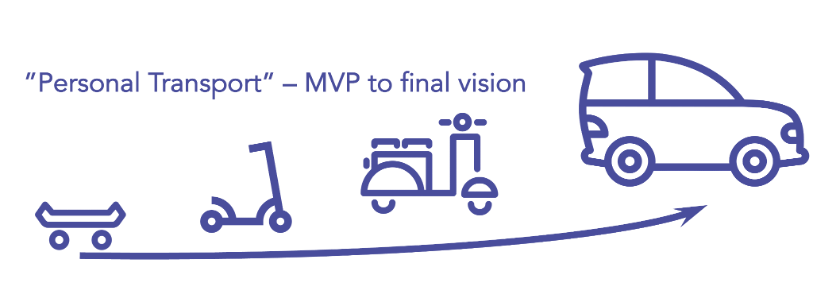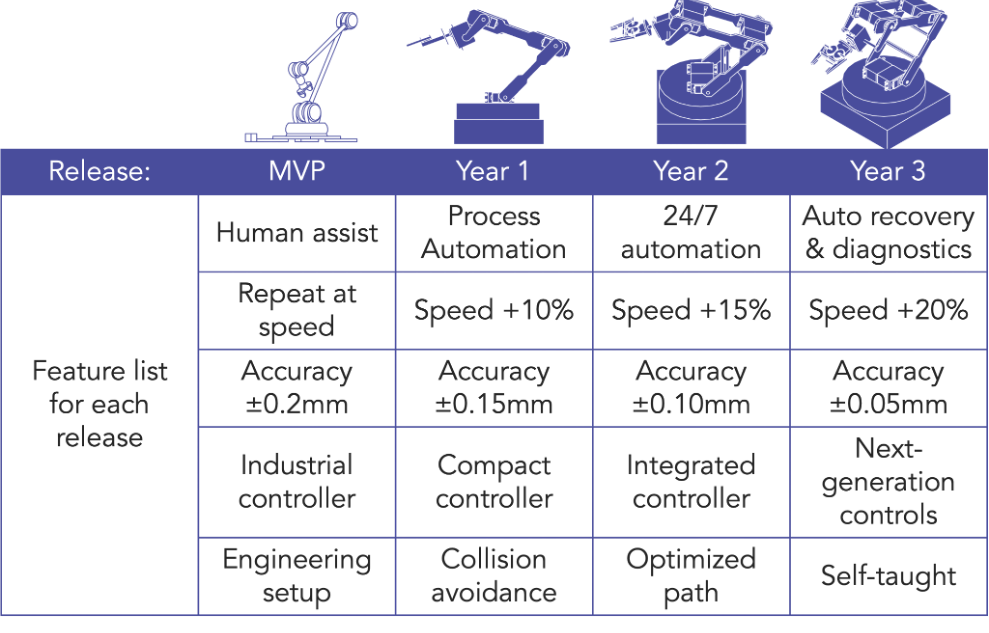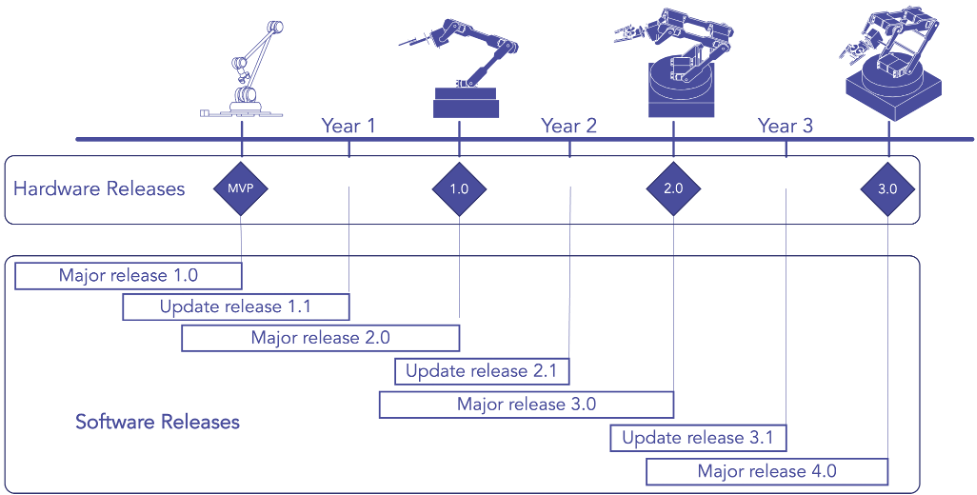
4. DESIGN & PLANNING – Part 1
A clear picture of your marketing and product requirements from the previous phase, Concept & Feasibility, sets the state for the next phase in the life cycle, Design & Planning.

Minimum Viable Product
The Minimum Viable Product (MVP) is the foundation of the design process and will frame your development effort in the subsequent phases in the product life cycle. Entrepreneur, and author of The Lean Startup, Eric Reis, defines the MVP as “…not necessarily the smallest product imaginable, it is simply the fastest way to get through the Build-Measure-Learn feedback loop with the minimum amount of effort.” In other words, the MVP identifies the essential features in your product.

When developing an MVP, consider the following:
- Is a feature absolutely necessary for the first product to ship?
- Do the features address the market need without extra bells and whistles?
- What features are important, but not urgent and can be built later and added to a strategic product roadmap?
Product Roadmaps
A product roadmap is a strategic way to manage product development for either a suite of products or for adding features to a single product based on your Market and Product Requirements Documents. Product roadmaps are usually based on time or a list of features to be delivered over a number of months. Depending on the complexity of your product, roadmaps are typically planned for the next 12-18 months and lookout 3-5 years to capture more general market trends.
With hardware products, it’s helpful to define a roadmap for the physical product to be shipped and create a separate roadmap for software features and improvements that can be added over time to the hardware platform.
For example, if you’re building robots for industrial automation, your multi-year product roadmap may include the following.
Hardware improvements for the product roadmap
- Increased payloads
- Faster speeds
- Improved accuracy
- Lower costs
- Compatible with new environments
Software improvements for the product roadmap
- Optimized path planning
- Reduced setup and integration time
- Integration with new sensors and/or vision systems
- Machine learning/artificial intelligence
- Improved user interface
Here are a couple tips to keep in mind. Start with a stable hardware platform and use software to make incremental improvements. Upgrades in hardware that drive major performance improvements and new features can be added every year or so. Furthermore, be sure to include sufficient time and resources in your plan for system integration and validation testing.
Finally, don’t forget that reducing the price of a product encourages adoption and is an important part of maintaining a competitive advantage. Taking the example of robotic manufacturing, lower costs enable robots and automation to be adopted in new markets and applications.

For software products, focus on your current sprint and prioritize your feature backlog based on the next set of user stories and features to be developed. Other backlog features may be important, but not urgent, so these can be scheduled over time.
For B2B products containing software, it may take several months to build an enterprise feature that is valuable to your customers. So, software upgrades for hardware may only happen once or twice a year.

With agile adoption, many companies have moved to a lean roadmap model, which simplifies the roadmap and planning process into 3 easy steps, “Now-Next-Later.” The benefit of this framework is it clearly parses work into three buckets:
- The most important and urgent work
- The next set of features to develop
- Long-term product development and planning
It’s similar to backlog grooming, sprint planning, in-process work, and done in the software development process. This template also works for hardware products if you replace “Now-Next-Later” with a 3+ year roadmap.
Finally, sorting roadmap items into 3 groups can help your team prioritize and focus on what features add the most value to your target customers.
Sort features into three groups:
- Critical
- Desirable
- Nice to have
This method also de-emphasizes desirable and nice-to-have features, reducing the total work required for your next release to create an MVP.
The product design has tradeoffs between the speed, cost, and complexity. The process of defining and building an MVP and creating a product roadmap are powerful tools to understand the tradeoffs and make the best strategic choices for your business.



